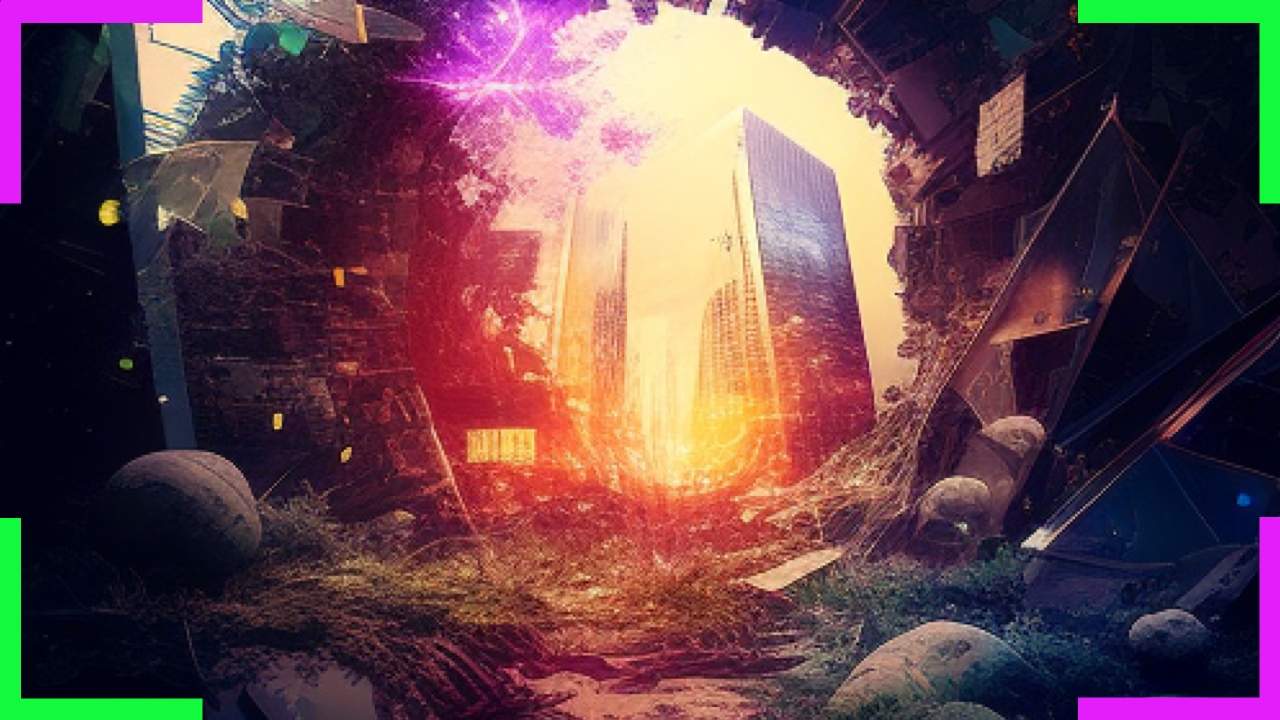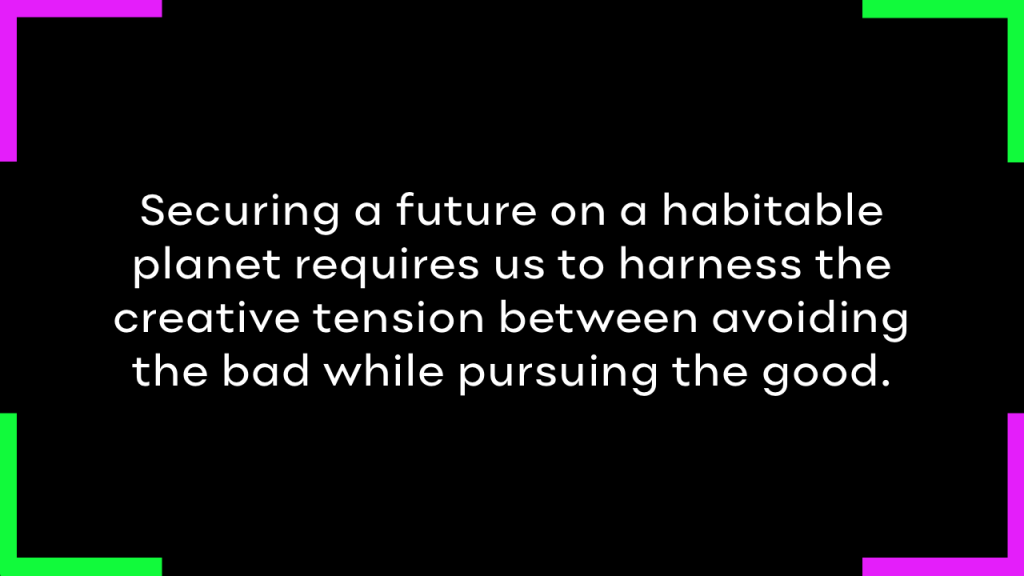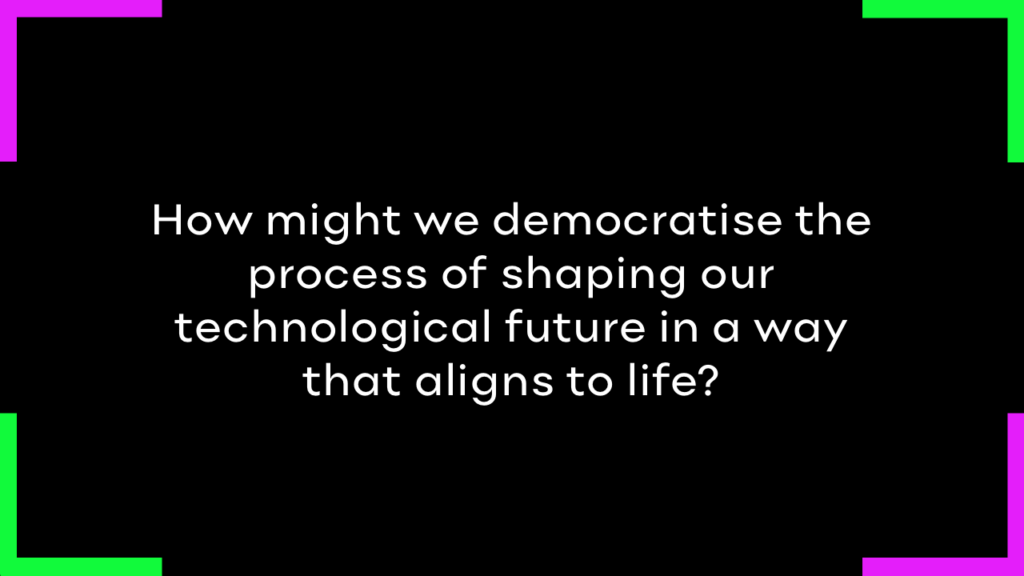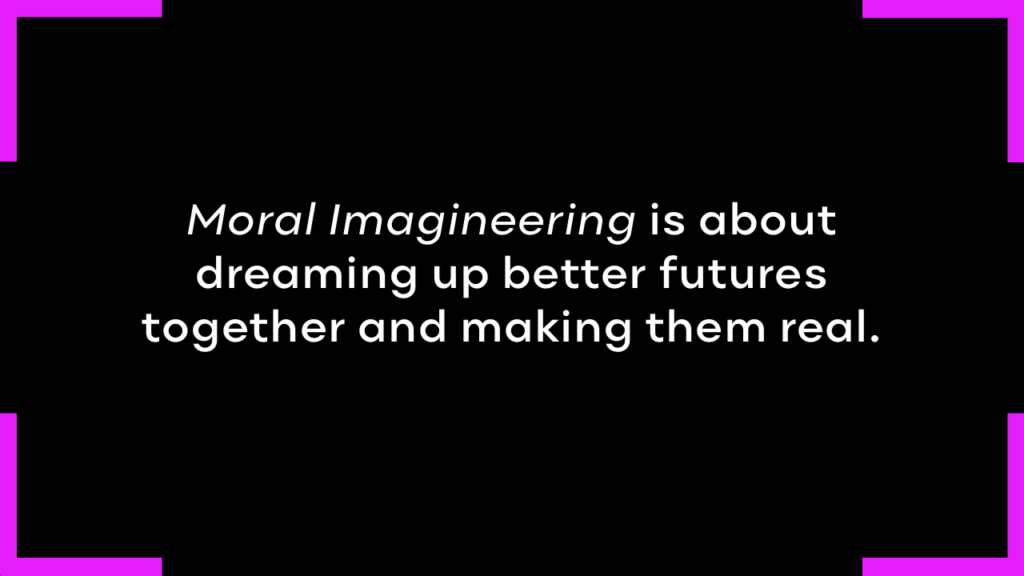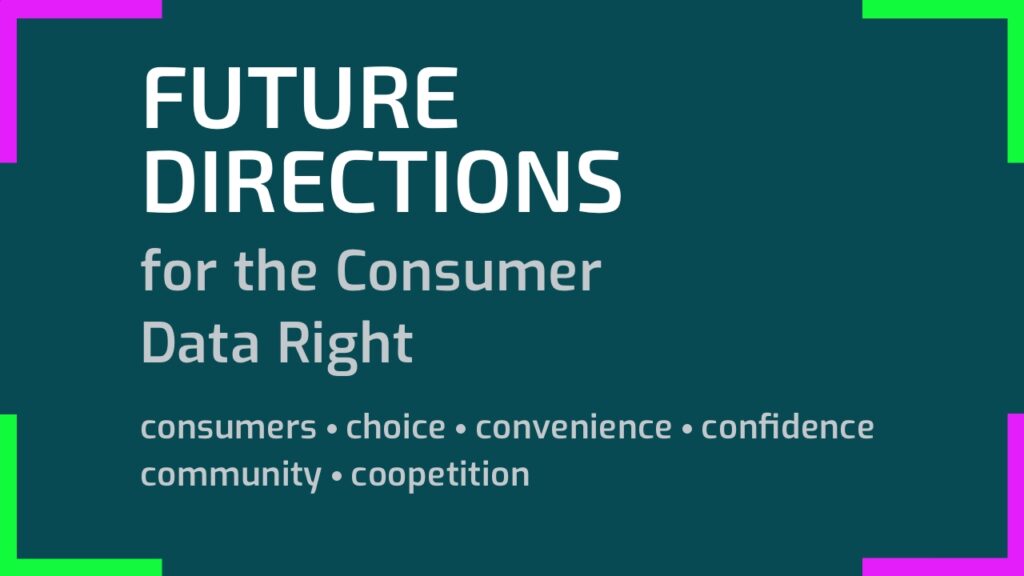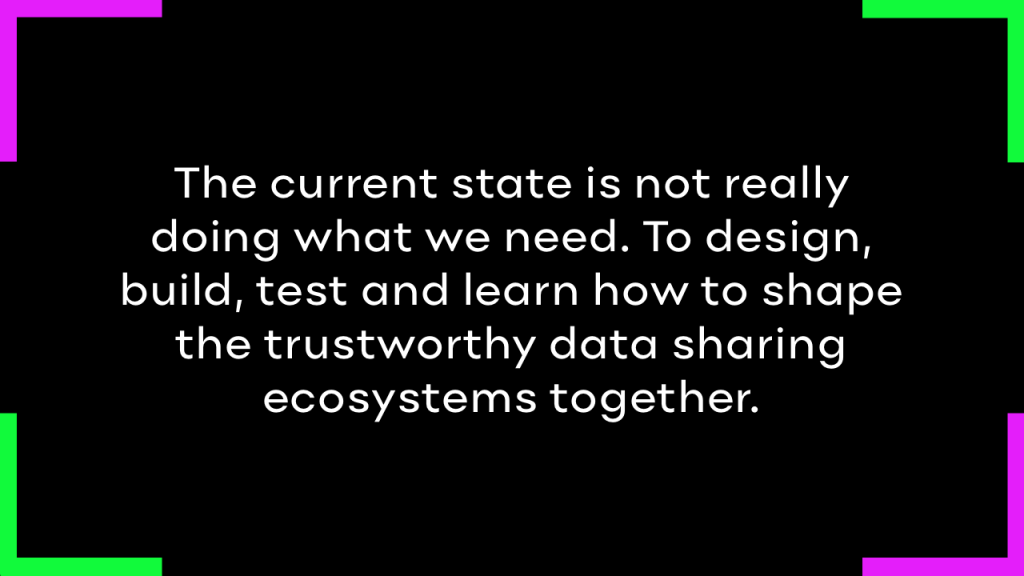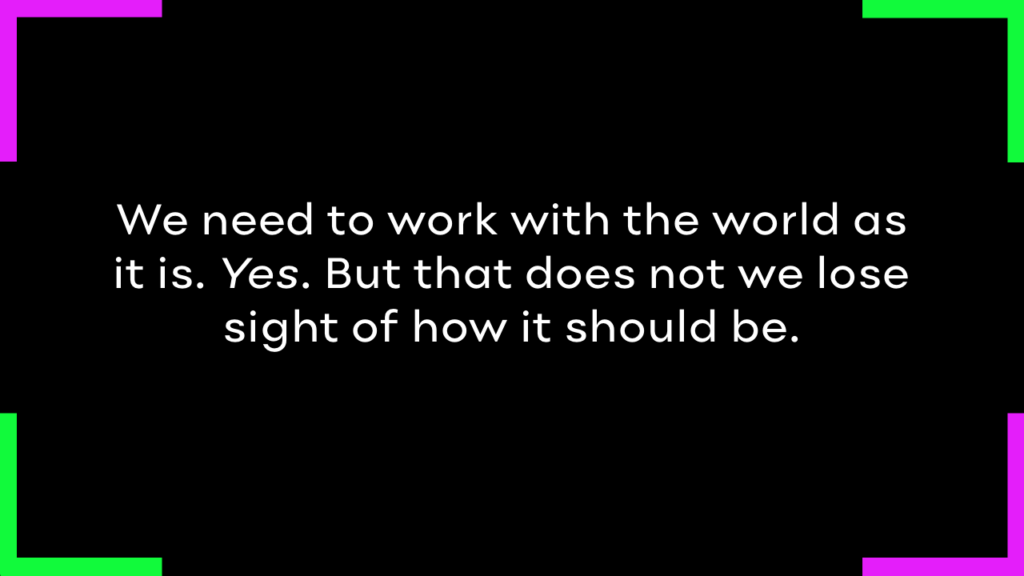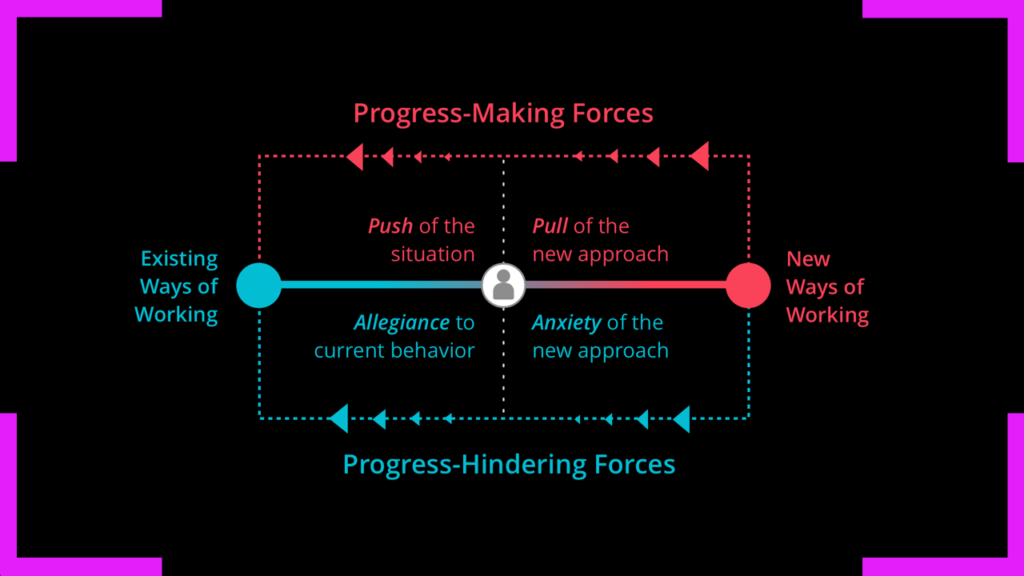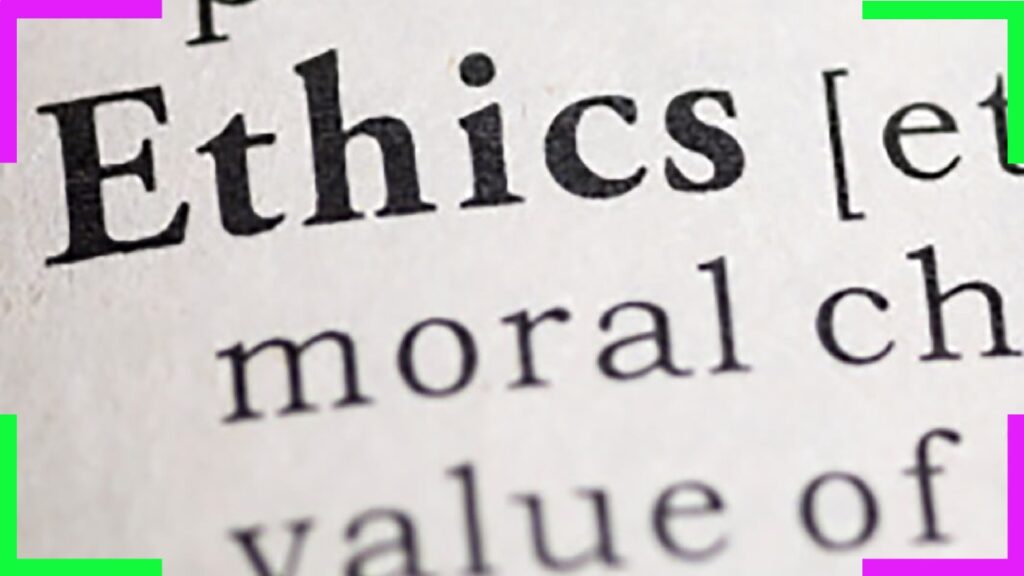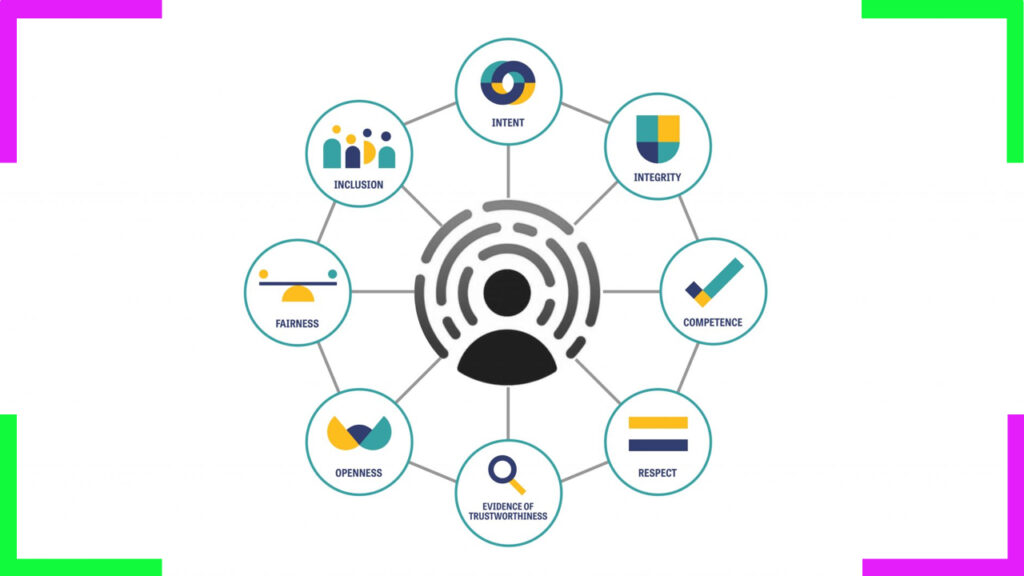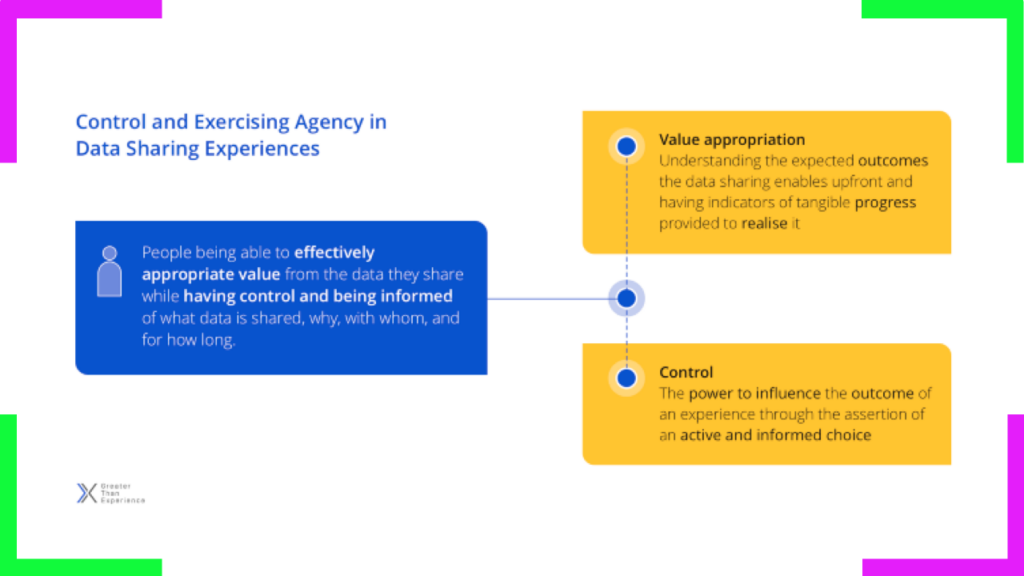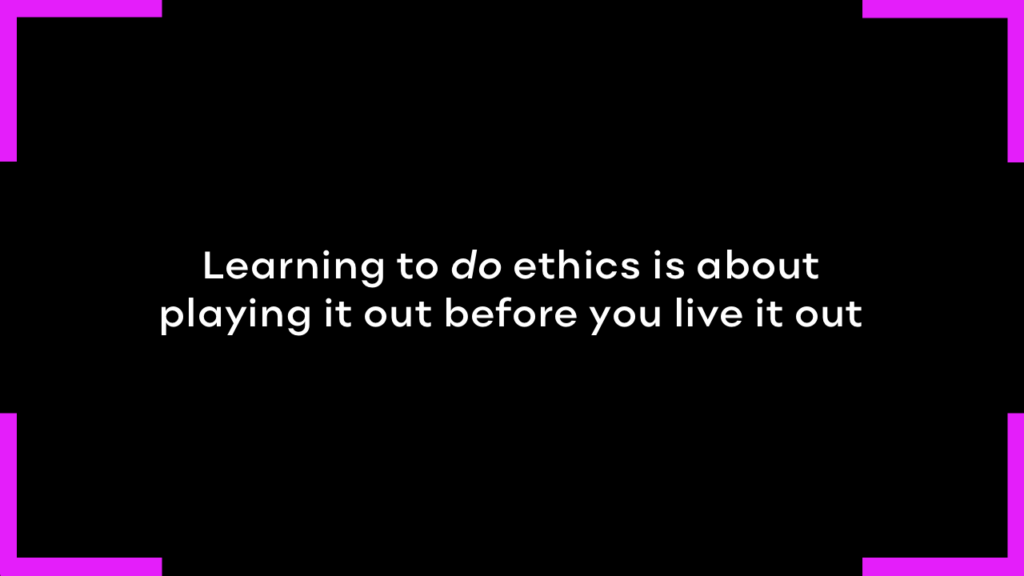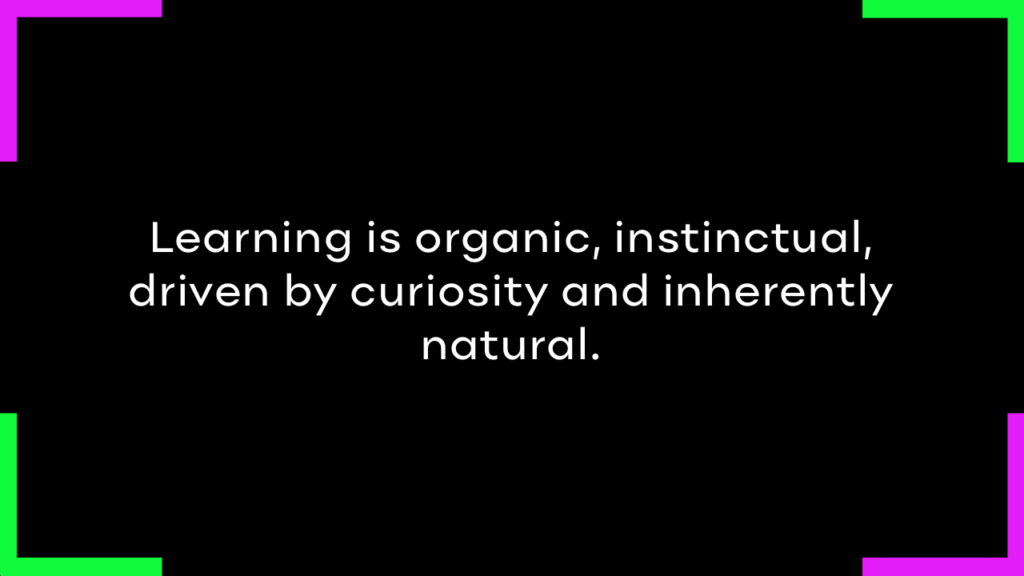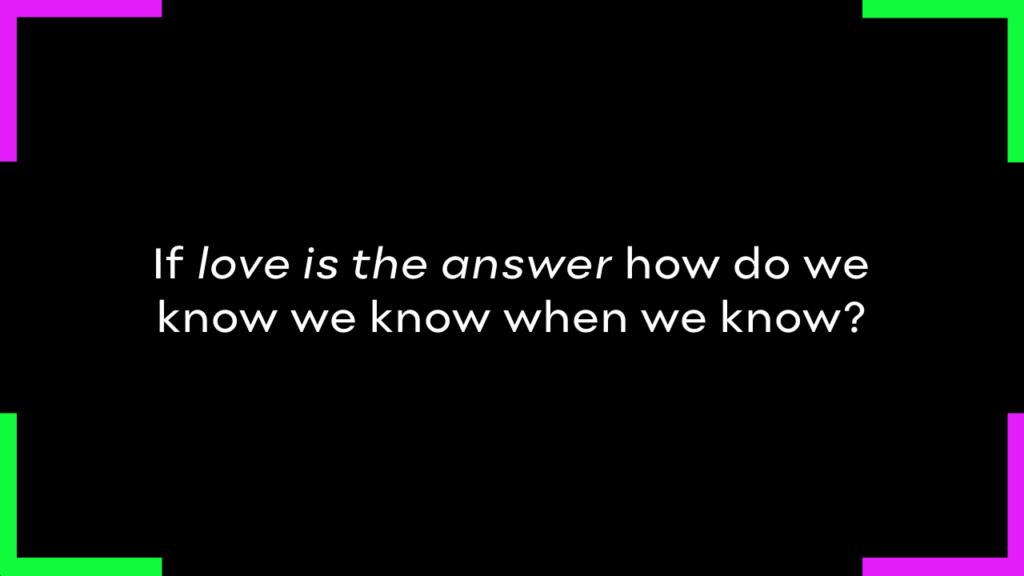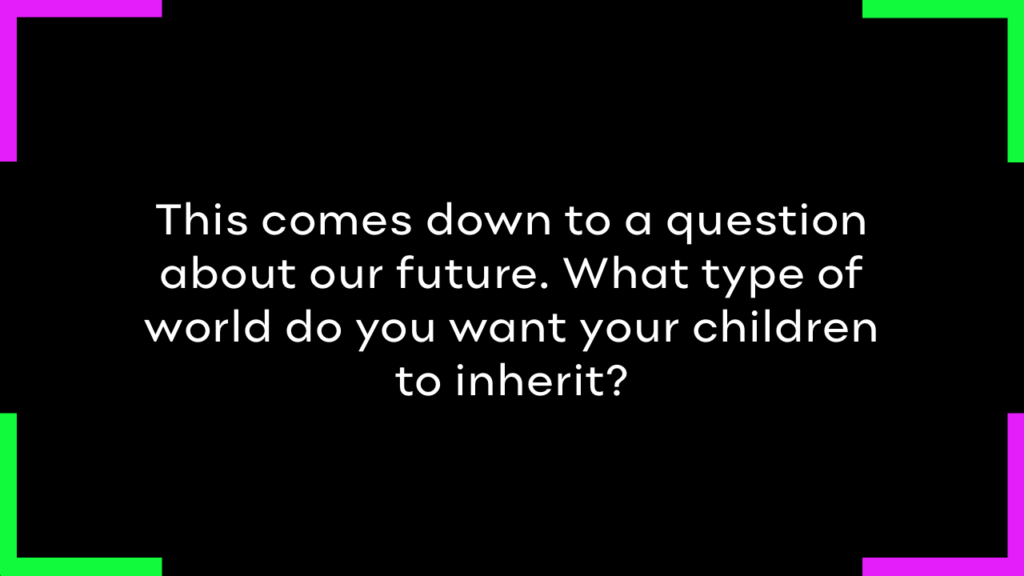We’ve seen an extraordinary wave of adoption with Generative AI and Large Language Models (LLMs) like ChatGPT over the past several months. The wave has come at us faster than anything else we’ve ever seen. Not without fanfare and criticisms, many people have shared views and commentary on the risks, opportunities and challenges we face. I wanted to contribute to this using a different medium and exercise my moral imagination a little more. So I wrote a hip hop track to capture my perspective on AI and sense of existential hope.
SPOILER ALERT! This article is my interpretation and the messages I desired to convey and condenses a significant amount of experience I have put into this field over many years. In creating the track there was absolute intention in the messages, but one of the things about flow like states is that stuff just comes to you. Lyrics and meaning drawn from the depths of human experience and consciousness that transcends any representation of human intelligence as defined by n parameters. One of the peeves I have when AI models get compared to human intelligence and number of neural connections compared to number of parameters. It’s not the same thing. Human intelligence is more than the neural connections in our brains. It’s IQ (Intellectual), EQ (Emotional) and SQ (Spiritual). It’s embodied in the trillions of neural connections throughout our nervous system and brain, and interconnected to our gut microbiome and the millions of fungal spores we inhale every day. It’s more. It’s a complex fabric interwoven in our social relationships, natural environment we inhabit and human history and culture. I diverged, but nough said.
The purpose of art and creative expression is not to impose an interpretation but to create the mental and emotional space for it. Even for the creator themselves. So you can explore my interpretation or listen to the track first. It’s up to you. Ultimately, I hope both provokes deeper reflection for you, particularly if you work in the field of responsible AI and innovation like me.
Listen to Ai Inside on SoundCloud
Lyrics
[Intro verse] [Interpretation]
Move past the bullshit, ethics washing fluff and stuff
Large language model tech’s an intelligence bluff
Narrative fires stoked as our morals get broke
Privileged pulling the yoke, acting woke like a joke
[Verse 1] [Interpretation]
Biased black boxes, our own imperfections
Transhumanist utopia, as no place detected
Arms race to the bottom ending in our demise
Look up, yeah you, ChatGPTs inside
[Chorus 1] [Interpretation]
The AI inside
Is our demise
Dumb AI reliance
Our demise
[Verse 2] [Interpretation]
We’ve lost community, that deep human connection
Machines, screens and dreams, distorted perception
Maybe we’ve all just become fuckin morally broke
As we train the machines on all these keystrokes
[Verse 3] [Interpretation]
Surface the grey, in a world painted black and white
Dark clouds in sight as it rains zeros and ones tonight
Lock up your kids, ban tik tok, youtube and meta
Stare into the void, a tech stone of rosetta
[Verse 4] [Interpretation]
Automating our life, bleak clouds descending
Humanity’s future, can seem like it’s ending
Black mirror reflections and memes take the stage
Uncertain paths forged in this post-truth age
[Verse 5] [Interpretation]
AI dev cycles, rewriting code
Responsible paths, shaping, new and different roads
Utopia or oblivion, these futures are untold
It’s up to us to break the fuckin hegemonic molds
[Chorus 2] [Interpretation]
The AI inside
Is not our demise
Ethical AI design
Could be our rise
[Verse 6] [Interpretation]
Empowered people, rainbow mirrored questions
Paths pursued for societal progression,
Elevate wellbeing, and work to codesign,
Tech enabled futures where all of us can thrive.
Navigating paths, as we try to stay aware,
Holding the tension, a delicate affair
[Chorus 3] [Interpretation]
The AI inside
Could be our rise
Smart AI reliance
Paths chosen wise
[Verse 7] [Interpretation]
Facing the challenge, on uncertain roads
Forge on, unburdened by history’s heavy loads
Confronting fear, embracing the unknown
Standing strong, our collective spirit shown
[Verse 8] [Interpretation]
ETHOS lives, and wisdom starts to grow
Learning together, paths begin to show
Ethical AI for the greater good
A brighter future shaped, as we know it could
[Verse 9] [Interpretation]
The Earthian journey towards critical path
Work to throw old ways down the shaft
Ethical AI tech to give us more time
It should and can powering our rise
[Verse 10] [Interpretation]
Is AI tech the liberator or enslaver
Or collective intelligence our best saviour
Share the wisdom, and moral insights
The AI era dawns, humans, time to unite
[Final chorus] [Interpretation]
AI inside
Paths chosen wise
Ethical AI inside
It’s up to us, now rise!
[Intro verse]
The intro verse is a call to action to move beyond the empty rhetoric and surface-level ethical practices that often prevail in the development of AI technologies. It’s time to go beyond the pervasive superficial gestures and delve into the core of ethical considerations. To embed moral imagination in product development workflows and operationalise responsible AI. For us to realise that this connects with our socio-economic contexts and the role of technology in enabling not just economic activity and capital extraction, but in supporting us as a species in realising our fullest potential to thrive.
Ultimately, we must not settle for mere optics when it comes to ethics in AI development. It’s essential to look beyond the surface and address the deeper ethical implications, ensuring responsible practices are integrated into the fabric of AI technologies and how we design, develop, deploy and use them.
Let’s ensure we continue with a critical perspective on the capabilities of Large Language Models (LLMs). We should continue to question whether these models truly possess intelligence (whatever that actually is) or if they are simply complex systems composed of algorithms designed to mimic human-like responses. Statistical inference and prediction. Yes, there are emergent behaviours we are being perplexed with, but it’s important to persistently scrutinise their limitations and biases despite the impressive capabilities.
Beyond the hype and seemingly magical things we can do, let’s approach the use of large language models and generative AI with a discerning mindset. One of sceptical optimism. We should recognise their limitations and be mindful of potential biases, acknowledging that they are advanced tools reflective of our social, cultural, economic and historical context rather than true embodiments of human intelligence.
There are consequences of compromising our moral compass in the pursuit of technological advancements. The intensification of narrative manipulation and the erosion of ethical values are interconnected issues that need attention. It raises concerns about the impact on our collective well-being and society.
We need to be vigilant about the narratives being shaped by AI technologies and their potential impact on our moral fabric. It’s crucial to foster a responsible and ethical approach to AI development that upholds our core values and safeguards against moral compromises.
We must continue to critique the performative nature of privileged individuals or entities who claim to be socially aware and conscious but fail to take meaningful action. We should question the authenticity of their claims and the depth of their commitment to social progress, and demand meaningful engagement with stakeholders rather than shallow displays of inclusion.
It is not enough to pay lip service to social issues or engage in performative acts of awareness. True progress requires individuals and organisations to actively address systemic inequalities and work towards meaningful change that goes beyond surface-level gestures.
[Verse 1]
Drawing attention to the issue of bias inherent in AI systems is crucial. These technologies are not immune to the biases present in the data they are trained on or the algorithms used to develop them. Put simply, they are a reflection of our own imperfections as human beings. Recognising that our biases and limitations directly influence the design, development, deployment and use of AI is part and parcel of the transformation we must go through.
Confronting this reality that the biases embedded within AI systems will continue to be there as we seek to address our own biases as well. This requires transparency, accountability, and ongoing efforts to mitigate bias in the data, algorithms, and decision-making processes that shape AI technologies. Most importantly, it involves compassion in the continued effort to help all people learn about themselves, the limitations we have and the biases reflective in our culture dragged around in our intergenerational baggage.
The concept of a transhumanist utopia, where humans and machines merge seamlessly, transcending our current limitations is rife in literature and popular culture. From novels to movies and TV series. Utopia will always remain as “no place”. Pursuing the ideals of transcending our limitations with technology is a worthwhile pursuit. But we need to maintain caution, even more so when the narratives of this come from and are persistently shaped by those that hold the most socio-economic power.
While the idea of a transhumanist utopia may hold fascination, we must approach it with curiosity and thoughtful consideration. Collectively working to navigate the ethical implications, societal impacts, and potential risks associated with the merging of humans and technology.
Many people show concern about the escalating competition in the development and use of AI. Such a race, driven by a relentless pursuit of advancement without proper ethical considerations, will lead to detrimental and potentially existential consequences for humanity as a whole.
We must resist the temptation to engage in this so-called arms race. Instead, we should prioritise responsible innovation that aligns with our values, emphasising the long-term well-being and flourishing of society over short-term gains.
Seen the movie “Look Up”? This allegorical asteroid is coming at as fast as media pundits fail to acknowledge the dire consequences its impact has or take it seriously in their commentary. We must look beyond the surface-level stories and messages and recognise the complexities and implications of AI technologies like ChatGPT. We should be cognisant of the presence and influence of these technologies, the new issues they present and the old ones they reinforce. Continuing to pursue an acknowledgement, deeper understanding and conscientious engagement with the ethical considerations and societal implications these technologies entail.
[Chorus 1]
The evolving chorus is a place for tension and reflects a cautionary perspective on the potential risks and dangers associated with the pervasive presence of AI in our lives. If we are not mindful and responsible in the design, development, deployment and use of AI, it will lead to negative consequences that jeopardise our well-being.
Let’s not be dumb by ignoring the potential dangers of blindly relying on AI without critical thinking and human oversight. Becoming overly dependent on AI systems without considering their limitations and the need for human judgement and decision-making is just dumb. While AI can bring numerous benefits, it is essential to maintain a balanced approach and not become overly reliant on AI as a substitute for human intelligence and discernment. We should remember that AI is a tool that should complement and augment human capabilities rather than replace them entirely. If this is the core pursuit, how is our future better than it is today? How does it help us in reimagining society? What is work? Human creativity? Economic output? Or the role of lawyers, management consultants or politicians?
[Verse 2]
It is crucial to recognise the potential consequences of technology on our social fabric and prioritise the preservation of authentic human connections. We should strive to find a balance between technological advancements and nurturing genuine human relationships, promoting compassion, and fostering a sense of community in the digital age. Our digital technologies are designed to be addictive. The hook model and behavioural design has pervaded the product design and development community for over a decade. Our nervous systems are well trained to react to things like notifications, colours and triggers to keep us scrolling and clicking unconsciously. In the context of social media platforms this has led to unhealthy amounts of time spent on these platforms and spawned divisive narratives, driven by algorithms to keep people engaged, changing people’s behaviour and distorting their perception of the world.
We’ve had an erosion of moral values and ethical considerations more broadly and the metacrisis discourse emphasises this fact. This can in part be correlated with the shift away from strict religious adherence and the dominance of these moral codes. But it is also part of people mimicking the systemic corruption and collusion we all see in business and politics. As above, so below.
We must be mindful of the ethical implications of our actions as we interact with these technologies. Remember, these foundational models have been trained on our data, reflecting our behaviours, narratives and culture and built on a history of exploitation, surveillance capitalism and mechanical turks. But we are more than mere data points and mechanisms to train the machines. We need to see ourselves, together, as active creators of these technologies. By being aware of how our behaviours and decisions can influence these technological systems, we can strive to foster ethical considerations and promote responsibility in their development.
[Verse 3]
There’s a great deal of complexity and nuance in life. More so when it comes to ethical decision-making in an increasingly polarised world. These considerations often lie in the grey areas between absolutist views of right and wrong, and we must develop the competencies to navigate these complexities rather than subscribing to simplistic binary perspectives.
“Surface the grey” is a double entendre. Tools like ChaptGPT will regularly dive into nuance when given a simple prompt. This is helpful when people engage with the output. It can counter the overly simplistic soundbites people are used to, the caricaturisation of problems or the polarisation of socio-political issues.
But we should acknowledge the intricacies of ethical dilemmas and avoid oversimplification. By embracing the ambiguity and complexity and engaging in thoughtful discourse, we can promote a more nuanced understanding of ethical issues related to AI and make informed decisions that align with our shared values.
The storm is brewing with unchecked AI proliferation. We must be vigilant about the potential risks and negative impacts. By prioritising ethical considerations and cultivating responsible practices, we will prevent the looming threat and ensure that AI technologies contribute positively to our society.
The uses of these technologies in social media platforms are having an adverse impact on young people. It’s clear we need protective measures and safe digital environments for young people without constraining their ability to explore and learn through curiosity. By implementing appropriate safeguards, educating children on responsible digital engagement, and promoting healthy online environments, we can mitigate potential risks and ensure they are equipped to inherit this brave new world.
We are staring into the vast unknown of these technological advancements. At the same time, these technologies can provide insights and unlock new possibilities, akin to the Rosetta Stone’s ability to decode ancient languages. Bringing forth innovations in material science, healthcare and genetics or in helping us to break down cultural barriers while ensuring linguistic diversity.
As we delve into this uncharted territory, we should continue to approach AI with a sense of curiosity and exploration. Through embracing the potential of AI as a tool for discovery and understanding, we will have the capability to harness its power to shape a better future.
[Verse 4]
There are real consequences of excessive automation and its impact on the human experience. The impact on people’s livelihoods is real. If we over-rely on automation without considering its broader implications, it will lead to a sense of detachment, disconnection, and a loss of human agency. This highlights that we should approach automation with careful consideration and balance. By embracing automation where appropriate and ensuring it serves human well-being and empowerment, we can avoid the negative effects of an overly automated existence and maintain our sense of purpose and engagement in life.
There’s an apprehension and uncertainty that can arise when contemplating the future of humanity in light of rapid technological advancements. While the future may appear daunting, it is essential to approach it with a sense of existential hope. By actively engaging in responsible AI development, cultivating ethical practices, and fostering dialogue and well-coordinated collaboration, we can shape a future that embraces the potential of technology while safeguarding human values and giving us the best chances of thriving as a species.
A reference is made here in this verse to the series “Black Mirror” and the reflection of society’s relationship with technology. The impact of technology on our lives, as depicted in the show, has become a central theme in our collective consciousness. Memetic webs weaved through media, symbolism and cultural diffusion. This reinforces that we must critically examine and regularly reflect upon the societal implications of technology. By engaging in meaningful discussions and actively shaping the narrative around AI and technology in our personal and professional lives, we can ensure that our future is guided by responsible and thoughtful considerations.
To build on this, we must cultivate critical thinking and discernment to navigate the complexities of the post-truth age. Things like deep fakes, social engineering and cyber fraud, and significant distortions of reality abound. But by promoting, critical thinking, digital and media literacy, ethical use of AI, collective learning, and fostering a culture of transparency and accountability, we can navigate these uncertain paths with integrity and better informed decision-making across the spectrum of people using these technologies.
[Verse 5]
The iterative nature of AI development and the continuous refinement of algorithms and software means it is not static but undergoes constant updates and improvements. This provides the space and opportunity for course correction. If we can ensure widespread adoption of responsible and ethical approaches to AI development, we can leverage these cycles to address biases, enhance transparency, diverse participation and ensure that AI systems align with our shared values and human needs. Like a large orchestra learning to play in time, with intentional practice and the cultivation of well-coordinated collaboration we can find our rhythm and harmony.
Through consciously shaping the direction of AI technologies, we have the power to chart new and innovative paths that align with what we truly value. This requires deliberate decision-making, and prioritising time for pause and reflection. It means widespread commitment to embracing best practice ethical frameworks and engaging in transdisciplinary collaborations. By fostering a culture of responsible innovation, we can pave the way for AI technologies that benefit humanity.
Here lies a crossroads with divergent potential futures and there will be many more despite the exponential wave hitting us now. The outcomes of AI development are uncertain but depend on the choices we make now and over the coming years. As we stand at this current crossroads, we must reinforce that the direction of AI’s impact on society is not predetermined. By actively engaging in ethical discussions, advocating for responsible AI practices, and working towards equitable and inclusive outcomes, we have the opportunity to confidently shape a future that aligns with our shared values and aspirations.
The final bar in this verse is a linchpin in that we must challenge the existing power structures and dominant narratives in AI development. A narrative spawned in silicon valleys littered with vulture capital funded startups. Encouraging a collective effort to disrupt and overcome entrenched biases and systems that perpetuate inequality and unethical practices. Breaking free from the hegemonic moulding of these narratives requires collective action and industry commitment to inclusivity, diversity, and equity in AI development. We must embrace diverse perspectives, advocate for marginalised voices, and work towards inclusive decision-making processes, so we can foster a landscape that is fair, just, dignified and reflective of our shared humanity.
[Chorus 2]
These technologies are not inherently detrimental to humanity and do not spell our downfall or demise. Instead, we should recognise that AI, when designed, developed, deployed and used responsibly, can be a tool for extraordinary progress and benefit. By harnessing this potential while maintaining a critical and ethical approach, we can ensure that it serves as a force for good rather than a threat. Ethical AI design has the power to elevate us and foster positive outcomes. In taking this path, we can unlock the transformative potential of AI and shape a future where these technologies augment our capabilities and empower us to thrive.
[Verse 6]
Empowering diverse individuals and fostering a diverse range of perspectives and questions is a key ingredient to our success here. Diverse voices and viewpoints are essential for comprehensive and inclusive decision-making. This will lead to a richer understanding of the impact of AI and foster an environment where a wide range of voices can be heard and respected. Helping us navigate the complexities of AI development with greater wisdom.
Pursuing paths that contribute to the progress and well-being of society as a whole should be the aim. By situating the pursuit of the most socially preferable futures at the forefront, we can ensure that AI technologies align with our collective values and contribute to a more equitable and prosperous future.
Enhancing our well-being should be the aim of every institution and we must continually advocate for a collaborative approach that considers the needs and values of individuals and communities impacted by AI. We must engage in codesign processes that include diverse perspectives and meaningfully involve individuals and communities in the design and development process. Ensuring that it aligns with their needs, aspirations, and values.
Almost anyone but sociopathic executives or narcissistic billionaires would agree here. That leveraging technology to foster inclusivity, equity, and well-being for all individuals, irrespective of their backgrounds or circumstances, is paramount. The message here is that a vision of a future where technology, including AI, is harnessed to create positive and equitable outcomes calls for a deliberate focus on designing and deploying technology in ways that promote accessibility, equal opportunities, and social well-being. By striving for inclusive tech-enabled futures, we can build a society that empowers and uplifts everyone.
The ever-changing nature of AI requires ongoing vigilance and adaptability. By staying informed, being critical creators and consumers of AI technologies, and actively participating in discussions and initiatives related to responsible AI, we can navigate the paths ahead with greater wisdom and discernment. Here, the reality is that ethical decision-making in AI is a nuanced and multifaceted social process. By embracing and learning to harness the tension and engaging in thoughtful dialogue and collaboration, we can strike a balance that upholds ethical standards while driving responsible innovation and societal progress.
[Chorus 3]
I wrote the chorus to evolve in line with some tension, shared humanity and existential hope. It reiterates the potential for AI to be a catalyst for our collective growth and advancement. It emphasises that by leveraging AI technologies in ethical and responsible ways, we can unlock opportunities for positive transformation.
This version of the chorus underscores the importance of making informed and prudent choices when relying on AI technologies. While AI can offer valuable insights and capabilities, it is crucial to approach its integration with wisdom and discernment. By adopting a smart and mindful approach to AI reliance, we can ensure that it aligns with our values, promotes human well-being, and leads to beneficial outcomes. We hold the power to shape the impact of AI on our collective future. By fostering a culture of responsible AI development, promoting ethical practices, and upholding shared human values, we can harness the transformative potential of AI to elevate our society and foster our rise.
[Verse 7]
Despite the uncertainties and challenges that come with the rapid advancement of AI, we must navigate this with collective resilience and determination. The development and integration of AI requires us to confront and address challenges head-on. By embracing the inherent uncertainties and actively engaging in responsible AI practices, soft and hard law solutions, we can navigate the ever-changing landscape of AI with resilience and pave the way for a more inclusive and beneficial future.
We’ll need to break free of the constraint imposed by past limitations or biases.
These constraints imposed by outdated paradigms, ways of thinking and doing. Our business models, influence of KPIs and “move fast and break things” mindsets are examples that get in the way of designing routines in product development workflows for moral reflection, codesign and collective deliberation. We’re unpacking this baggage as practitioners and communities. With much momentum around ethics in technology seen over the past years and a resurgence of interest in making it real beyond the platitudes. Beyond mere principles.
By learning from history, acknowledging past mistakes, and adopting a forward-thinking approach, we can forge a path that leverages the best of AI while avoiding the pitfalls of the past. Facing our fears and stepping outside of our comfort zones and exploring new territories. New business models and more inclusive participatory ways of product development.
There is untold power we are yet to harness for good with well-coordinated collaboration, compassion, and collective action in shaping the future of AI. When we come together, united by a shared purpose and values, we can overcome challenges and shape AI in a way that aligns with our collective vision.
[Verse 8]
ETHOS, representing our moral character, beliefs and habits, is the guiding force in shaping this path. You as a person, a practitioner, consumer and user of the tech, have a responsibility here. We have to learn together to shape AI technologies, and cultivating our ETHOS is key to advancing AI ethically and responsibly. By fostering a culture of knowledge sharing, collaboration, and continuous learning, we can navigate the complex terrain of AI development and collectively chart a path towards a better future.
This verse is also a reference to a platform we are building at Tethix called ETHOS. An acronym that emerged as we were decomposing our theory of change. Standing for Ethical Tension and Heath Orientation System. A platform making tech ethics accessible and embedded in the tools, practices and ways of working used to design and build digital technologies. Underpinned by a use of language and metaphors core to our theory of change we call a ‘symbio-memetic’ system. More on that one another time…
As we move forward as designers, product managers, data scientists, academics, policy makers and industry leaders, it’s crucial to acknowledge that we do have the power to shape the trajectory here with emerging technologies like Large Language Models (LLMs) and Generative AI. By working together, embracing ethical practices, and fostering inclusive decision-making processes, we can unlock the full potential of AI and create a future that reflects our shared values and aspirations.
[Verse 9]
Our transformative journey of humanity as we navigate the critical path towards a better future is a reference to R. Buckminster Fullers book “Critical Path”. If you haven’t read it, you should.
We need to challenge and let go of outdated paradigms and ways of thinking, making room for new possibilities. These technologies can enhance our capabilities and provide us with more time to focus on what truly matters. You can probably recognise that much of our journey as humans involves embracing change, shedding outdated ways, and harnessing the power of our creations to have a positive impact on the world. It recognises the potential of AI to empower us, extend our capacities, and create more time for meaningful pursuits. By embracing ethical AI and utilising it as a tool for progress, we can elevate ourselves collectively and embark on a path of positive transformation. AI tech will enable this in the physical and digital world. But we don’t need machine-brain interfaces controlled by a corporation to be ubiquitous to do that. Just community, compassion and ways of working together better to cultivate collective wisdom. Which is in large part what the final verse is about…
[Verse 10]
This ending verse provokes questions about the potential impact of AI technology on humanity. The perennial question of contrasting possibilities of AI serving as a liberator or an enslaver, highlighting the importance of how we wield and shape this technology. Here, I suggest that the power lies not solely in AI technology itself, but in our collective intelligence and wisdom being harnessed. We need to get better at this to solve the complex challenges in front of us as a species, the rapid adoption of LLMs and Generative AI being just one of them.
By harnessing our collective wisdom, sharing moral insights, and working better together, we can create a future where AI is leveraged as a force for positive change and human advancement toward a type 1 civilisation.
[Final chorus]
The final chorus of “AI Inside” serves as a call to action, urging us to embrace ethical AI and take responsibility for the choices we make as we advance with these technologies. The path we choose must be guided by collective wisdom and a commitment to applying ethical principles. The line “It’s up to us, now rise” encourages us to rise to the challenge and collectively shape a future where AI is harnessed for the greater good.
It calls upon individuals, communities, and technologists to rise to the occasion, embodying the shared values we have as a species and working together to build a future where AI serves humanity’s best interests.
Wrap up thoughts
In “AI Inside,” I explore the complex landscape of AI through the lens of introspection, societal concerns, and the potential for positive transformation. The track raises critical questions about the role of AI in our lives and emphasises the importance of responsible AI development, social power, inclusivity, and ethical decision-making.
As we delve deeper into the possibilities and challenges of AI, it is crucial to approach its development and use with wisdom, compassion, and an unwavering commitment to ethical principles and practice. By cultivating our moral imagination, fostering interdisciplinary collaborations, engaging communities, and promoting responsible leadership, we can shape a future where AI technologies align with our shared values, contribute to human well-being, and foster a more equitable and sustainable world.
This journey is a collective endeavour, one that requires the active participation and collaboration of diverse individuals, communities, and technologists. It is up to us to make wise choices, navigate the complexities, and rise to the challenge of shaping an AI-powered future that serves the best interests of humanity.
If you want to discuss any of these topics with me and the Tethix team and how we might take collective action, I invite you to pop into our virtual office in the Tethix Archipelago for a discussion.
As always, with heart {m3}

